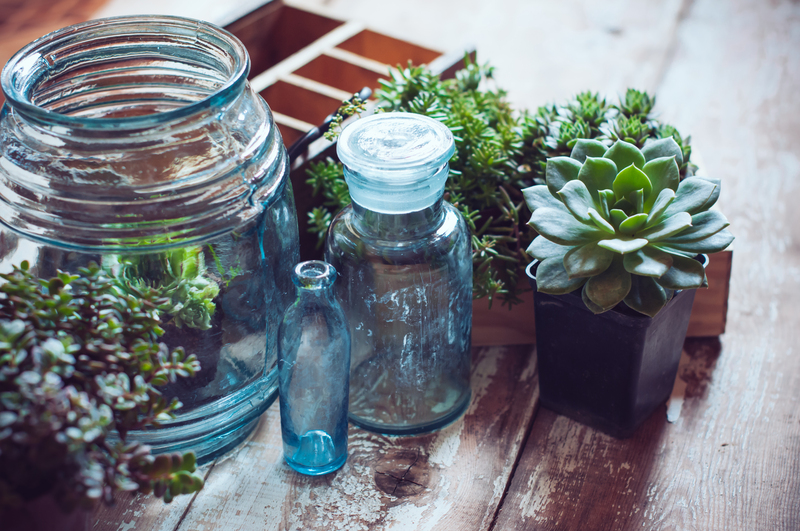Packaging Revolution: Modern Cardboard Disposal Challenges
In the midst of a packaging revolution, cardboard has emerged as the hero of sustainable packaging. However, with its surge in popularity comes a complex set of issues associated with cardboard disposal. As e-commerce expands and businesses aim for eco-friendly alternatives, the spotlight shines more than ever on cardboard waste management and its environmental impact. This article delves deep into the cardboard packaging revolution, outlines the core challenges in responsible disposal, and provides actionable solutions for businesses and consumers alike.

Cardboard Packaging: The Core of the Packaging Revolution
The global transition towards eco-friendly packaging is undeniable. Cardboard packaging leads the charge for a multitude of reasons:
- Biodegradability: Cardboard is made from renewable resources, breaks down more easily than plastics, and has a lower carbon footprint.
- Versatility: It suits a range of products - from food to electronics to furniture - and can be customized for branding.
- Recyclability: It's one of the most widely recycled materials around the world.
However, the very factors that make cardboard packaging popular also create cardboard waste disposal challenges on an unprecedented scale.
Why Has Cardboard Use Skyrocketed?
Driven by the e-commerce boom, direct-to-consumer (DTC) models, and increased online shopping, the demand for cardboard boxes has soared. Retailers rely on corrugated cardboard for reliable, lightweight, and protective packaging. Statistics show that global cardboard and paperboard production exceeds 400 million metric tons per year, and the trend is rising.
The Cardboard Disposal Dilemma
Despite its recyclability, certain barriers prevent optimal cardboard disposal and recycling. Here are the main issues confronting municipalities, businesses, and individuals:
1. Contamination of Cardboard Waste
Many types of cardboard come into contact with food, liquids, or adhesives. Contaminated cardboard cannot be recycled effectively and is often diverted to landfill. For instance:
- Pizza boxes saturated with grease
- Cardboard beverage trays stained with coffee or soda
- Packing materials with glued plastics, tape, or foam inserts
Proper education on clean cardboard disposal is lacking, resulting in significant waste.
2. Overwhelming Municipal Collection Systems
The rapid accumulation of cardboard packaging waste in residential neighborhoods, particularly after shopping peaks or holidays, often overwhelms curbside collection. Many recycling plants cannot process the sheer volume efficiently, which can lead to:
- Overflowing recycling bins and illegal dumping
- Increased operational costs for waste haulers
- Missed pickups and decreased recycling rates
3. Inefficient Sorting and Recycling Processes
A significant portion of cardboard waste includes packaging with plastic windows, metallic coatings, or colored inks. Many standard recycling facilities lack the equipment to sort and process these materials efficiently. Consequently, mixed-material packaging often goes unrecycled.
4. Geographical Disparities in Cardboard Disposal
Not all regions have access to robust cardboard recycling infrastructure. In rural or under-resourced urban areas, cardboard ends up incinerated or sent to landfill, negating its environmental advantages over plastics.
Environmental Impact of Cardboard Waste Mismanagement
When not handled properly, cardboard disposal problems contribute to landfill overflow and wasted resources. Decomposition in landfills, although faster than plastic, still produces methane - a potent greenhouse gas. Every ton of unrecycled cardboard wastes 17 trees, 7,000 gallons of water, and thousands of kilowatt-hours of energy.
Best Practices for Effective Cardboard Disposal
To overcome cardboard disposal challenges, stakeholders across the chain must adopt best practices. Here's how:
For Consumers:
- Flatten all boxes to save space and ensure easier sorting.
- Remove contaminants like food crumbs, oils, and non-cardboard attachments (e.g., plastic tapes, styrofoam).
- Separate clean cardboard from regular trash and other recyclables.
- Follow local waste management guidelines for cardboard disposal schedules and methods.
For Businesses:
- Design smarter packaging: Reduce unnecessary layers and mixed materials.
- Educate staff and consumers: Clear signage and instructions for cardboard waste separation.
- Invest in balers or compactors: These machines compress cardboard, reduce hauling costs, and enable higher recycling rates.
- Partner with local recycling firms: Ensure a consistent pickup and processing pipeline.
For Municipalities:
- Upgrade recycling infrastructure to handle larger volumes and diverse cardboard types.
- Incentivize composting and reuse in cases where recycling isn't feasible.
- Drive public awareness campaigns around proper cardboard disposal and contamination prevention.
Innovative Solutions Addressing Cardboard Disposal Issues
Around the world, organizations are pioneering new solutions to tackle cardboard packaging waste. Some notable trends include:
- Automated sorting systems: Advanced AI and robotics now identify and sort contaminated from clean cardboard with higher precision.
- Biodegradable coatings: New technologies enable water-resistant cardboard without plastic films, making more boxes recyclable.
- Reusable box programs: Some logistics firms have launched returnable cardboard packaging to cut waste and costs.
- Decentralized recycling: Small-scale local processing units reduce transportation emissions and engage communities.
The Future of Cardboard in Sustainable Packaging
The packaging revolution is far from over. As innovations roll out, cardboard disposal obstacles must be met with coordinated actions. The future may bring:
- Zero-waste packaging mandates for certain industries
- Greater use of post-consumer recycled cardboard in box manufacturing
- Integration of smart labels to streamline recycling logistics
- Collaboration between brands, cities, and consumers on circular economies
Key Takeaways: Winning the Fight Against Cardboard Waste
- The cardboard packaging revolution offers sustainability benefits but poses real waste management challenges.
- Effective cardboard disposal hinges on clean, uncontaminated recycling streams, infrastructure upgrades, and public education.
- Innovative recycling technologies and reusable solutions promise a more circular, low-impact packaging future.
By facing the cardboard disposal challenges head-on, businesses and consumers can ensure that the modern packaging revolution doesn't come at the environment's expense. Whether you are unpacking your latest online purchase, running a shipping operation, or overseeing waste management for a city, play your part in making cardboard a true pillar of sustainability.

Frequently Asked Questions: Cardboard Disposal and Packaging Evolution
What cardboard materials are NOT recyclable?
- Heavily waxed or plastic-coated cardboard
- Boxes contaminated by oil, food, or chemicals
- Padded mailers with bubble wrap lining
Always check your local facility's policy as technologies and accepted materials vary.
How do I prepare cardboard for recycling?
- Remove all non-cardboard materials like tape, labels, and packing materials.
- Flatten the boxes to optimize space and facilitate sorting.
- Keep the material dry and clean to prevent contamination.
Does recycling cardboard really help the environment?
Absolutely! Recycling one ton of cardboard saves over 9 cubic yards of landfill space and up to 46 gallons of oil. It drastically cuts CO2 emissions and preserves precious forest resources.
Conclusion: Empowering the Packaging Revolution with Smart Disposal Choices
The surge of cardboard in the global packaging industry signals a new era in sustainable commerce. Yet, without robust cardboard waste management, the benefits may be lost to pollution and resource depletion. By following best practices, innovating in design and recycling, and fostering public awareness, we can realize the promise of cardboard as a cornerstone of the modern packaging revolution. The next time you receive a package, remember: your choices matter for the planet's future.